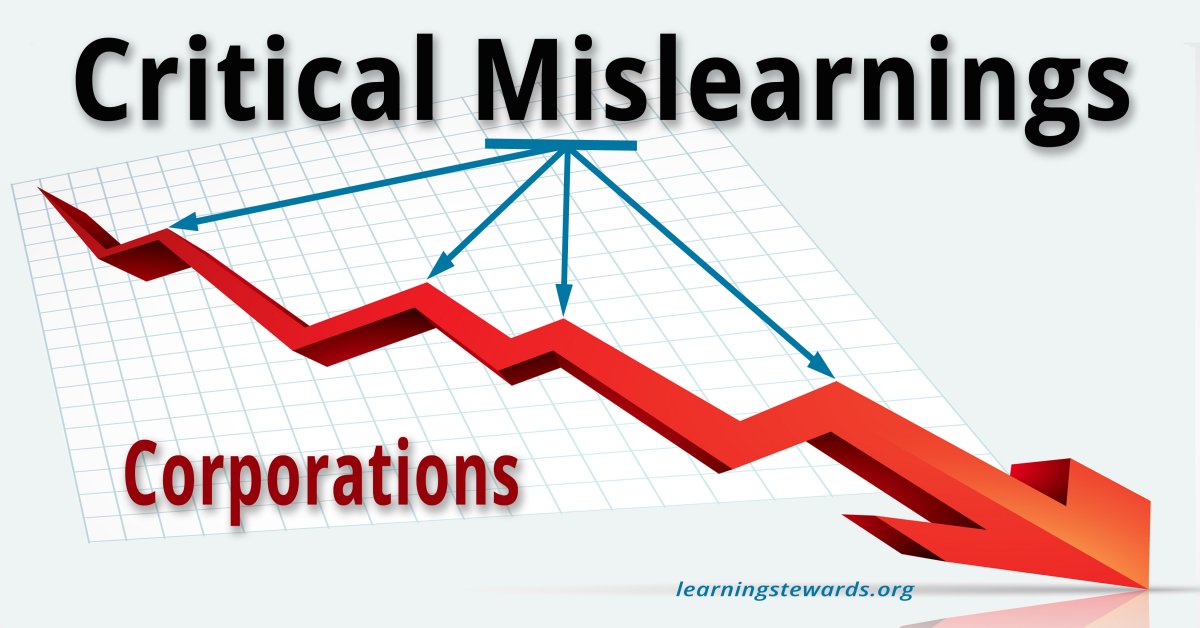
The business examples are everywhere: Kodak missing Xerox, IBM missing Microsoft, Sony missing Apple, Microsoft missing Google, Google missing Facebook, Facebook missing Twitter, Blockbuster missing Netflix, Walmart missing Amazon, and on and on. In each case, the already dominant, well-positioned, and resourced company failed to take advantage of a huge opportunity emerging in its own front yard.
The history of business provides many such examples of great companies with big money, big brains, and great market positions making epic mistakes because while becoming great, they learned mental models that misoriented and misdirected their ongoing learning.
Kodak, once the world’s leading image processing company, didn’t think reproducing pictures of paper (copying) was worth investing in. The world’s leading computer company at the time, IBM thought the market for personal computers was so small that it gave away the PC OS business to, at the time, the tiny company Microsoft. Sony, the world’s leading brand of portable music players, at the time, didn’t get the inevitability of digital music and players such as iPods.
How could such well-funded companies, run by intelligent and experienced leaders, fail to recognize and capitalize on such huge opportunities? Because they had learned not to. Because the mental models (they learned) about their market and their position in the market misoriented and misdirected their ongoing learning.
Their failures were not the result of a lack of learning capacity or a lack of learning. Rather their failures were the result of learning in the wrong ways and about the wrong things. Their failures were the products of their own misoriented and misdirected learning.
Xerox-Kodak
IBM-Microsoft
Sony-Apple
Microsoft-Google
Google-Facebook
#corporatelearningdisabilities
Back in the late 80s and early 90s, while working on Apple’s desktop university, with Bohm and MIT, and with CA Senator John Vasconcellos I was trying to learn to make the case for a new kind of organizational learning infrastructure (I called it “Distributed Dialogue Processing“. During that phase I connected with Tom Peters. He was at the time one of the nation’s most widely known management gurus. He had written the forward to the “The Interactive Corporation“, a book with a chapter on my work. It was his most famous book, “In Search of Excellence” that asked: why do so many Fortune 500 companies fall out of the Fortune 500? His question is a great starting point and it’s always been a fascinating dipstick into what I’ve come to call “Critical Corporate Mislearnings”.

[…] Remember, Google couldn’t predict Facebook. (2023 addendum – see “Critical Mislearnings: Corporations” […]
[…] the Cardinal’s speech is just as relevant to the leaders of science, technology, politics, business, education and, most importantly, those responsible for how healthily human children learn to […]